The question that always makes me concerned is the cleanliness of the water in my reef tank. So in my article today I would really like to answer the question of how it is possible to keep the tank clean from food and other organic waste that can cause the harmful environment for the corals and fish. As you know I’m a big fan of the water changes and you can check my full article on this subject here - Clear Advice – Exploring Reef Tank Water Changes. I replace at least 10% of the water in my reef tanks every week. When only water changes are enough to keep your nutrients in check for low stocked tanks, for larger and heavily stocked aquariums a right filtration system is crucial for the organic waste that is constantly growing in your tank. You might choose using only biological filtration to deal with this problem, but experienced reefers are using a protein skimmer because it has a range of advantages that will be revealed in my article below. For now I will just say that it is worth considering for those who have a saltwater aquarium.

Author:
As a lifelong aquarist, Yuliya has an endless curiosity about our underwater universe. After graduating with a bachelor’s in Environmental Engineering, she transformed her passion into a successful career. While working at the Institute of Environmental Protection in Moscow, her passion for saltwater and reef aquariums only increased. Moving to the United States in 2013, Yuliya embarked on another impactful journey by sharing her unprecedented experience for all aquarium hobbyists ... Read More.
Let’s get down to business, are protein skimmers necessary?
Skimmer cleans the water in the tank by removing organic waste from the water before it has a chance to break down and release nitrogen compounds back into your reef tank, which will affect your nutrients levels. This device makes your aquarium a healthier place for its inhabitants because parasites and other harmful microorganisms prefer to live in a dirty environment. So the main benefit of using a skimmer is that it could reduce the number of diseases among your aquarium creatures by keeping your nutrients levels in check. Click here to earn more about Nutrient Export Method Hack and How To Choose Your Ideal Method.
Secondly, skimmer helps you in a battle with algae that can really destroy all your efforts to keep your reef clean and thriving. And also, as a positive side effect, more light will pass through your aquarium, providing corals growth, and in prospect, corals will have more intense color.
Finally, organic compounds floating in the water can change the pH level. Unstable pH level is one of the factors that make a bad influence on life in your tank.
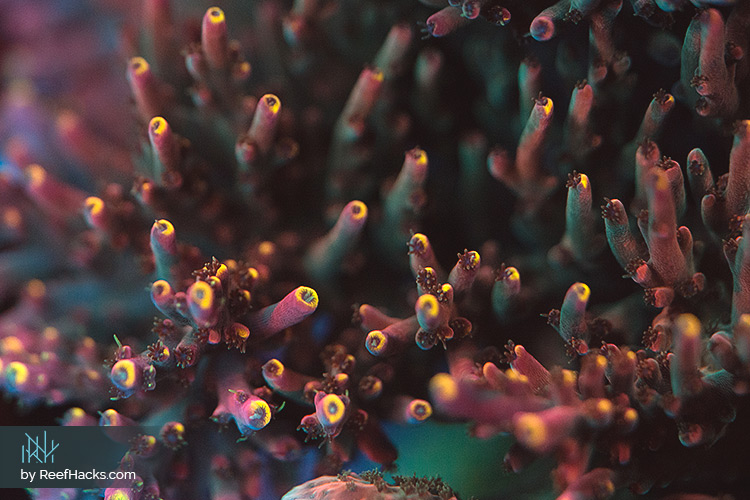
So what’s the secret, how does the skimmer work to prevent pollution of your reef?
As you know, as an engineer I love technical things, investigating how they work and making some scientific research. I am always amazed by protein skimmers, how effective and easy to use they are. Simply put, protein skimmers clean the water by the attraction of organic molecules to the thousands of air bubbles, which then move to the waste container. It’s easy isn’t it?
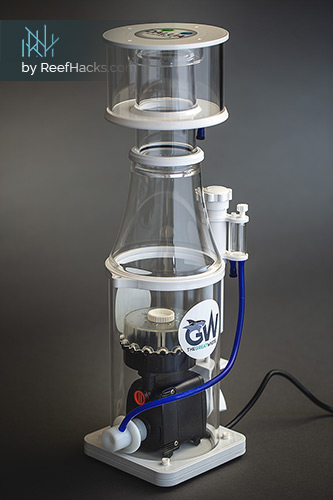
The liquid then becomes dark and dirty - it is called skimmate and should be emptied before it has a chance to overflow back into your tank. Can you imagine that all this was in the tank but invisible to eyes? I am sure, every reef aquarium will benefit from a quality protein skimmer. I don’t know a better way to remove organic waste from the tank. For instance, a mechanical filter can trap some visible particles, but if it has not been cleaned, in time all the nutrients will release back into the aquarium. Instead, protein skimmer pulls the waste out the water and you only need to clean the container. If we continue to compare protein skimmer with chemical filters, we will also find some further advantages of the skimmer. These two methods have a similar aim - to keep your reef tank nutrients levels in check. A chemical filter absorbs waste into chemical media, and when it is filled up it should be replaced. If you forget to do it, all pollutants can leach back into the tank.
A protein skimmer, on the contrary, has an endless surface to absorb waste due to the constant generation of air bubbles, all you need to do is to keep an eye on the collection cup. Protein skimmer is crucial for marine aquariums with sensitive reefs and heavily stocked aquariums.
So what’s it all mean?
Protein skimmer prevents your inhabitants from different diseases, stops aggressive growth of algae, cleans the water from visible and invisible toxic compounds and makes the saltwater clear and your corals flourish. OK, I know what you’re thinking ...
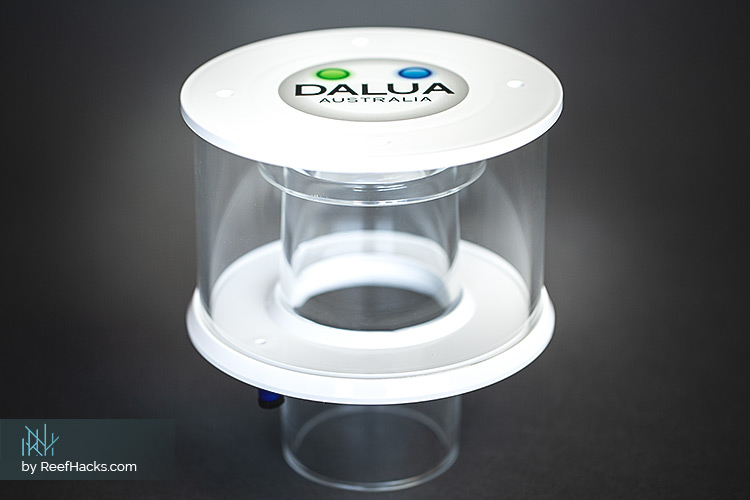
What protein skimmer should i get?
There are a lot of quality products in a category of protein skimmers and one of the remarkable models which worth your attention is the Skimmer Model GW-10 by Dalua Australia. For a very long time, I wanted to get in hands this skimmer for a test and finally, my dreams come true.
Dalua Australia is famous for its filtrating and LED lighting systems. At first, I saw this company at one aquarium exhibition, where they presented their products. Sometimes it is important not only to see the logo of the brand but also get to know, who stands behind the product. The team of this company consists of passionate manufacturers, who find the best solutions to make great quality products. They even called their new model of skimmer - Great White. The background story of developing this skimmer was just amazing. Can you imagine that these guys have simply used a standard skimmer model for their research with the hope to improve it and make it more user-friendly? With so much passion, there is no surprise that they succeeded in that. Together with changing technological and design features for the new model, they also put an extra effort to make it upgradable, which means that Co2 scrubbers and lanthanum chloride drips can be added directly into the venturi. If to forget about skimmers for a short while, their overall product range combines great quality with attractive design. I know, that this brand is new in the USA but I believe that soon it would be well-known among reef-lovers.
Now let’s take a closer look...
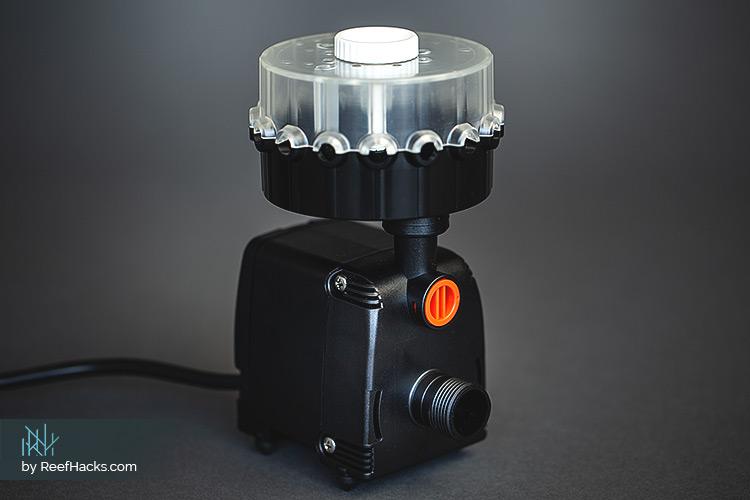
Benefits of Skimmer Model GW-10 by Dalua Australia.
Great White Skimmer includes 55W Italian made AC Eden pump, which provides strong skimming power to produce an enormous amount of air bubbles every second. On top of all the technical advantages of this skimmer, the thing that I appreciate a lot is that it is super quite. My test showed only 52 decibels rating which is a very nice result for a skimmer of that size. Moving closer to its capacities, it is able to filtrate up to 500-1,000 liters (up to 260 gallons) of water with an impressive air intake of 400-750lph.
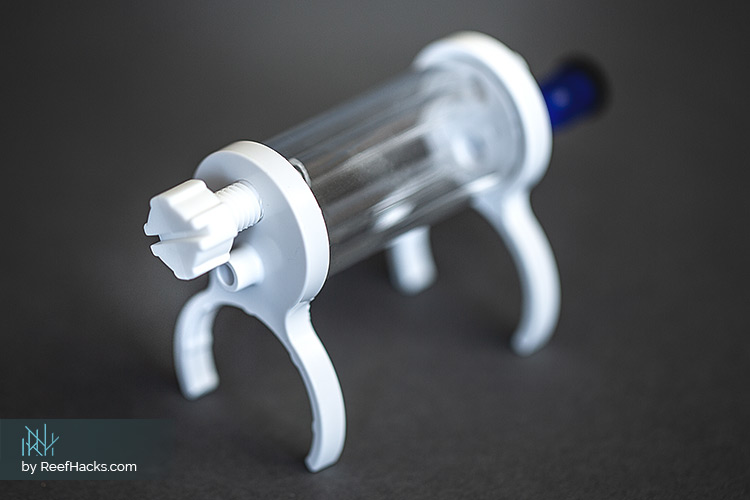
This brand provides post-sale assistance and professional customer support service, ready to answer all your questions even in social media and reef forums like Reef2Reef.com, which also adds proses to this particular brand. Along with I have to mention that the quality makes me believe it will be trustworthy and long-lasting as the main part of the skimmer is made from high-quality acrylic. What also I like about this skimmer is that here is employed in my opinion the most convenient mechanism for water level regulation. To raise the water level you should rotate regulator in the minus direction - it will restrict water from leaving. On contrary screwing regulator in the plus direction will drop the water level. It is very simple and standard mechanism that allows you to make precise water regulation without any difficulties.
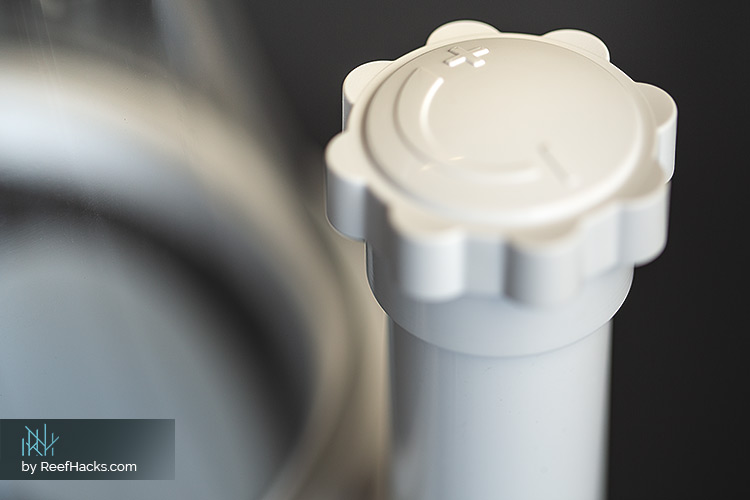
What else? After purchase, you get it in separate parts but it is very easy to assemble. You don’t need any hand tools. Every detail is developed that way that it is suitable for screwing by hand. So the setup of this device is pretty easy even for those who have never done it before. But I'd like to see a connector/stand for the pump in the next versions of this skimmer, this would be much easier to align the pump inside the air chamber. At this moment it's just standing on the bottom of the skimmer on rubber feet and you need to make sure that the bubble diffuser plate is aligned well on the center before you start using it.
Naturally, for a passionate reefers not only the technical side of the product matters but also the design. My new GW-10 skimmer is quite similar to other skimmers of the class - it has a conical body, which makes it compact and a good fit for even very tight space. Along with, the cup is large and it is very easy to clean it. However, there is one visual feature of this skimmer that makes it remarkable among other skimmers - it is an uncommon design of bubble diffuser plate. In contrast to other skimmers, it has holes along all perimeter of the plate, while the most common design is to have holes on the top. Overall, the design of the skimmer looks excellent to satisfy enthusiastic reefers.
You can buy this skimmer from our friends at Unique Corals by clicking here.
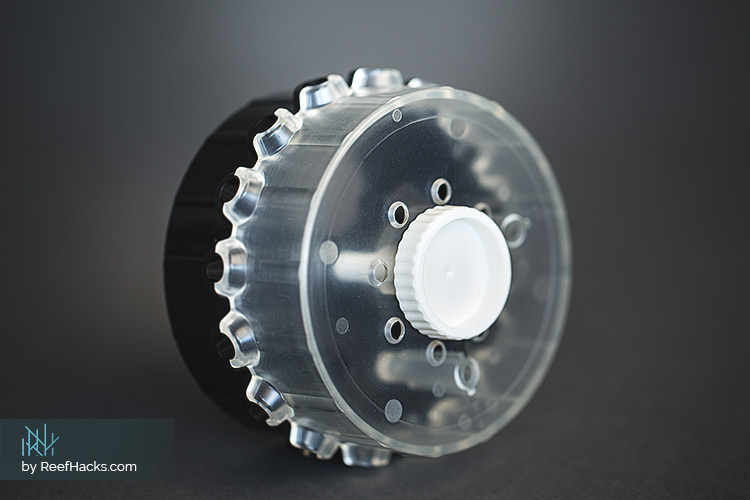
From Australia with Love, Skimmer Model GW-10 - Final Thoughts.
In closing, I want to summarize that this skimmer is a great choice for an affordable price. It delivers constant cleaning to your aquarium and due to its capacity, it can be adjusted to the tanks of different sizes. It does everything it was bought for. So my first experience with a new brand in the USA market - Dalua Australia was great and I can’t wait to see more products released by them.
Be sure to follow their Facebook Page, and while you’re at it, send us a message with any questions you may have. Although mastering the artform of reefing is a lifelong journey, you aren’t alone! As always,
Happy Reefing! by Yuliya Ivanova for ReefHacks.








